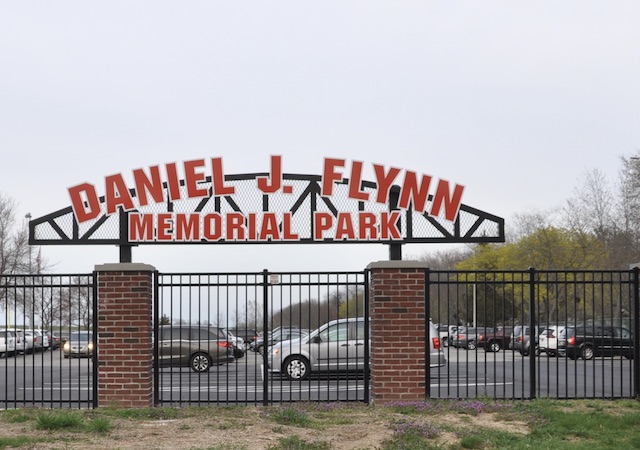SUFFOLK CLOSEUP: 50 Years Of Focus On Freedom Of The Press
 Sunday, January 21, 2024 at 11:13PM
Sunday, January 21, 2024 at 11:13PM SUFFOLK CLOSEUP
Karl Grossman
 It was 50 years ago and I was at my desk at the Suffolk County office of the daily Long Island Press in Smithtown reading an article about a reporter being jailed for not divulging the identity of a source. Sources, especially in investigative reporting, are invaluable, golden.
It was 50 years ago and I was at my desk at the Suffolk County office of the daily Long Island Press in Smithtown reading an article about a reporter being jailed for not divulging the identity of a source. Sources, especially in investigative reporting, are invaluable, golden.
I was talking about it with the Suffolk editor of The Press, Tom Condon, who was at the desk across from mine, and saying to Tom how important it could be if we had a press club on Long Island to fight for our colleagues in this sort of situation, indeed doing our part in fighting for press freedom.
On Long Island, I was thinking, were hundreds of journalists devoted to the profession of journalism. As we were talking, Dave Woods, then the head of university relations at Stony Brook University, happened to call the office.
I got on the telephone and asked Dave whether I could utilize Stony Brook’s press list to send out an invitation to Long Island journalists to an initial meeting about forming a press club. The meeting was held at the Three Village Inn in Stony Brook. More than 50 journalists were there. And I was elected president.
I worked subsequently at writing a constitution for the press club. I sent letters to press clubs around the U.S. requesting copies of their constitutions and I formulated a constitution based on these.
We elected additional officers including Maurice Swift, a Newsday editor, who became vice president, and board members from each area of media: print, TV, radio, but not Internet yet as it was 1974.
I have been thrilled as the Press Club of Long Island has grown. It has expanded to become a chapter, in fact one of the largest chapters, of the Society of Professional Journalists, the biggest press organization in the United States.
In these 50 years the club has kept a key focus on freedom of the press—especially important in recent years amid attacks on media, the totally false charge that the press is the “enemy of the people” when, in fact, the opposite is true.
A tidbit: originally my idea was to name the club the Long Island Press Club. This would be consistent with the names of many press clubs: the New York Press Club, Los Angeles Press Club and Cleveland Press Club, the original name of the club in Cleveland where I had been inspired to go into journalism by a college internship in 1960 at the Cleveland Press. But at the time the two major daily newspapers here, competing intensely, were Newsday and the Long Island Press and there was concern among some Newsday folks about this name considering I was with the Long Island Press. There might be the appearance, it was felt, that this would somehow be a Long Island Press undertaking. So I quickly suggested Press Club of Long Island instead. And that’s how the club got its name.
The president now of the Press Club of Long Island is Brendan J. O’Reilly, deputy managing editor at the Express News Group which publishes The Southampton Press, The East Hampton Press, The Sag Harbor Express and the website 27East.
Says O’Reilly: “Half a century later, the Press Club of Long Island and similar journalism-advocacy organizations are as relevant as ever. Often for political purposes, Long Island journalists are not only unfairly maligned but also harassed and threatened. Still, they continue to stand up for truth and transparency. PCLI remains strong in its commitment to defending press access and freedom.”
Relates O’Reilly: “We bring journalists together for the annual PCLI Media Awards, sponsor the Long Island Journalism Hall of Fame, host educational events and conversations on journalism matters for journalists and the public at large, provide speakers for classrooms and conferences, and award thousands of dollars in college scholarships annually for the next generation of journalists. PCLI has a dedicated board of volunteers who lend their time and their journalism experience to make all this happen.”
Long Island has a strong journalistic history.
In 2015 the Press Club created a Historical Studies Committee to conduct research and place historic markers at various important sites of journalism on Long Island. The following year, the first markers were set up which included one in Sag Harbor that declares: “DAVID FRONTHINGHAM—PUBLISHER OF LONG ISLAND’S FIRST NEWSPAPER, FROTHINGHAM’S LONG ISLAND HERALD, 1791-1798, LIVED AND PRINTED AT THIS SITE.” And the club erected a sign in Huntington to commemorate where Walt Whitman founded The Long Islander newspaper in 1838. The Long Islander continues being published. Whitman was more than one of America’s greatest American poets; he was also a great Long Island journalist. There have been more signs placed since.
More about the activities of the Press Club of Long Island in this space next week.
 Karl Grossman is a veteran investigative reporter and columnist, the winner of numerous awards for his work and a member of the L.I. Journalism Hall of Fame. He is a professor of journalism at SUNY/College at Old Westbury and the author of six books.
Karl Grossman is a veteran investigative reporter and columnist, the winner of numerous awards for his work and a member of the L.I. Journalism Hall of Fame. He is a professor of journalism at SUNY/College at Old Westbury and the author of six books.
 . |
. |  Post a Comment |
Post a Comment | 











